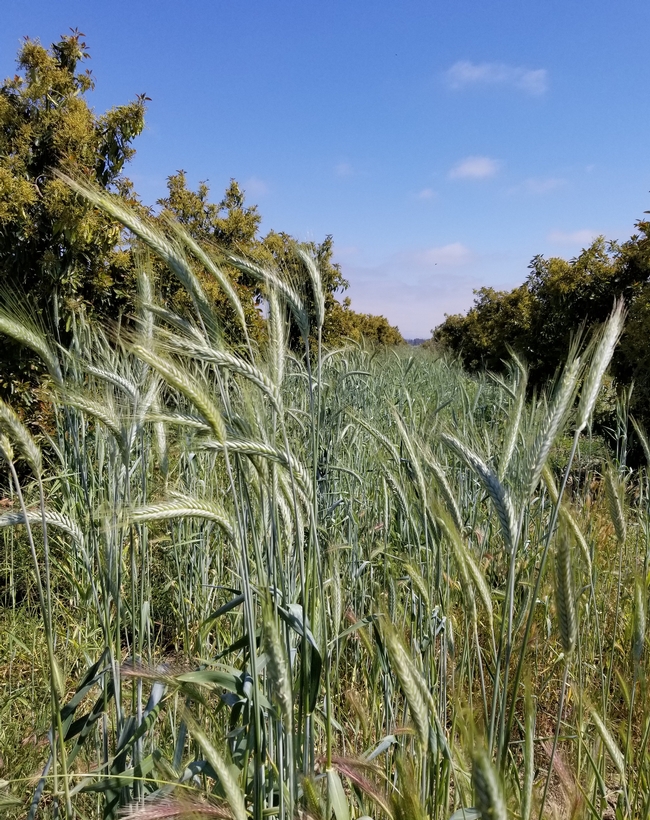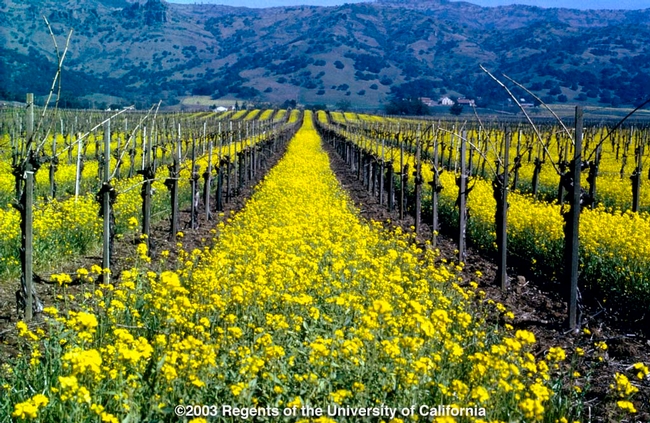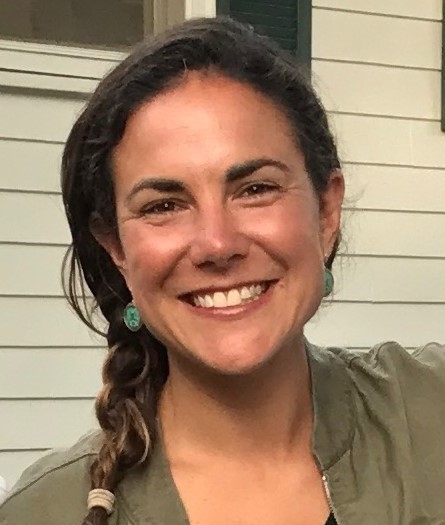Cover crops in avocados. How do you select species? When do you seed? Do they even work? What benefits do you notice? What are the management issues associated with cover crops? These were all questions addressed at a grower field day seminar entitled, “Avocado Nutrition and Cover Crop Usage” at Pine Tree Ranch. Hosted by the California Avocado Commission and presented by Ben Faber and myself from UC Cooperative Extension, the cover crop portion of the seminar culminated in a grower panel of three cover crop veterans. On the panel was Carl Stucky, a seasoned avocado grower in Carpinteria, Mike Sullivan, an orchard manager who dabbles in both organic and conventional, and Chris Sayer, owner of Petty Ranch in Saticoy. So, what did we learn?
Cover cropping history?
All three of the growers on the panel had been cover cropping for over 20 years. As Carl Stucky put it “Cover cropping is not new. People have been cover cropping for thousands of years.” But how you cover crop and why is completely unique. Chris Sayer started cover cropping to alleviate soil compaction issues that were killing lemon trees. Mike Sullivan was inducted into cover cropping managing Valencia trees suffering from poor soil health and water infiltration. Carl Stucky started cover cropping on a property that suffered from severe soil erosion and loss.
Species selection?
Different cover crops can address different issues. Initially, Chris focused on deep rooted crops such as sugar beets and daikon radish to break up soil compaction. Recently, he has been using grasses such as triticale to build biomass and increase soil organic carbon. Carl aims for a variety of rooting types and diversity of plants to keep beneficial insects around. “I look for a range of responses and benefits, it is all cumulative”, he stated. All growers mentioned mixing it up, aiming for rotating diversity, and using selective covers to address specific needs. Agricultural crop rotation provides benefits such as soil fertility, nutrient cycling, and erosion control. A permanent tree orchard can't be rotated, yet diversity in cover crop selection allows growers to gain benefits of crop rotation.

Benefits?
Cover crops provide a multitude of benefits based on species selected and issues being addressed. For growers in Ventura County, improving water infiltration is a noticeable benefit that everyone relates to. All growers reported issues of runoff prior to cover cropping and have seen dramatic improvements in retaining water in the soil. For a drought prone area and sensitive avocado trees, this could be the difference in surviving a July with a 120 degree heat wave or not. Pack out comparisons offer subjective records of yield increases on cover cropped bocks. And notable improvement of soil structure offers a compelling case for cover cropping benefits. Using soil map data, Chris Sayer estimates his orchard was around 2% organic matter prior to cover cropping. After decades of dedicated cover cropping, he now brings soil samples in with organic matter topping 5.7%. That is almost unheard of in Ventura County. All of that organic matter improves soil structure, tilth, water infiltration, and microbial communities to support healthy trees. For a long-term investment in cover crops, it can be tricky to specifically cite one benefit over the other. Mike Sullivan spoke to the challenge of putting a line item on a spreadsheet relating to cover crops saying, “How do you measure change in yield? Well, that is not necessarily why you cover crop. You cover crop because it makes sense.”
Problems?
The word of the day is management. As with anything, if you don't manage appropriately, issues will arise. In the case of avocado orchards, some of these problems can come in the form of irrigation entanglement from greedy cover crops, fat gophers snacking on your greens, thirsty cover crops sucking your water supplies, or providing a nice place for weeds you don't like to grow. These are all considerations and managing cover crops efficiently plays into how prevalent these problems are. As with any system, it is all about trial and error and using a curious mind to manage well.
Take home message.
Cover cropping is a fine balance of art and science. There are guides, resources, and research to inform decision making about what to cover crop and when, but there is no hard and fast answer. The success lies in choosing the right cover crops to address specific issues and managing them as they work within a unique system. Cover crops are successful when the grower is interested in feedback, experimentation, and learning. This could mean manipulating seeding dates based on weather, terminating cover crops based on tree needs, getting creative with seed mixtures that fit the orchard. At the end of the day, it is all about finding creative practices to improve the overall functioning of the orchard and being adaptable to the future ahead.

Climate smart agriculture encompasses management practices that increase soil carbon sequestration, reduce greenhouse gas emissions, improve yields and efficiencies, and promotes climate resilience. The California Department of Food and Agriculture (CDFA) supports three funding opportunities in climate smart agriculture: the Healthy Soils Program, the State Water Efficiency & Enhancement Program, and the Alternative Manure Management Program.
In a collaborative partnership, CDFA and UC Agriculture and Natural Resources have teamed up to support 10 community education specialists throughout the state to provide technical assistance and outreach for the climate smart agriculture programs. As one of these technical assistance providers, my role is to promote and support the adoption of these programs in Ventura County. If you are interested in working with me, please contact me at amrowe@ucanr.edu.
